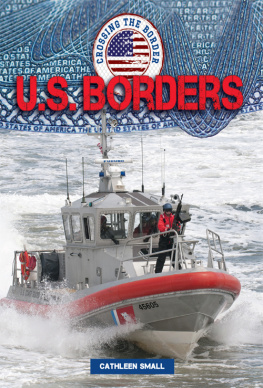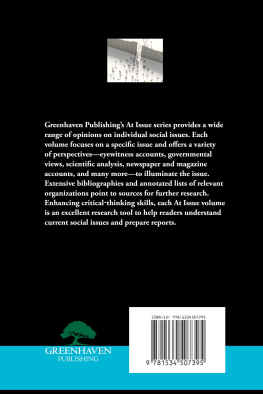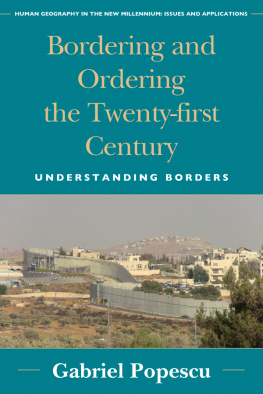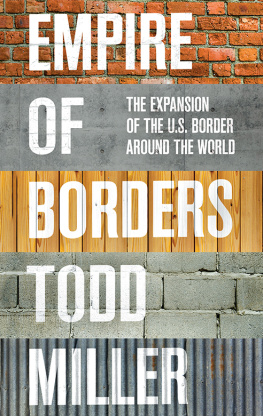Contents
Guide
Pagebreaks of the print version
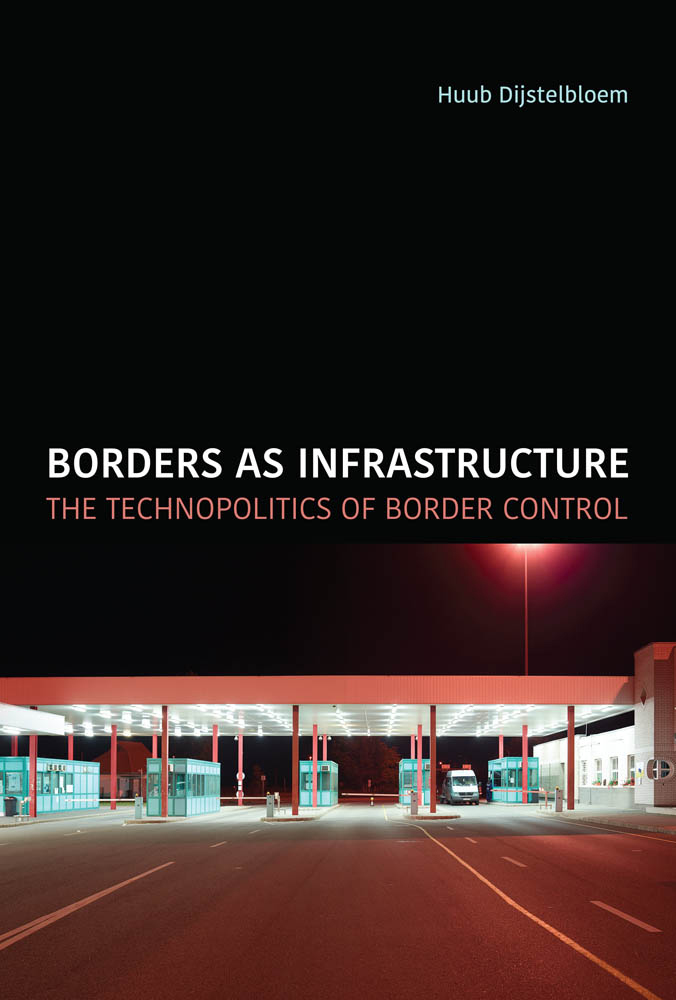
Infrastructures Series
edited by Geoffrey C. Bowker and Paul N. Edwards
Paul N. Edwards, A Vast Machine: Computer Models, Climate Data, and the Politics of Global Warming
Lawrence M. Busch, Standards: Recipes for Reality
Lisa Gitelman, ed., Raw Data Is an Oxymoron
Finn Brunton, Spam: A Shadow History of the Internet
Nil Disco and Eda Kranakis, eds., Cosmopolitan Commons: Sharing Resources and Risks across Borders
Casper Bruun Jensen and Brit Ross Winthereik, Monitoring Movements in Development Aid: Recursive Partnerships and Infrastructures
James Leach and Lee Wilson, eds., Subversion, Conversion, Development: Cross-Cultural Knowledge Exchange and the Politics of Design
Olga Kuchinskaya, The Politics of Invisibility: Public Knowledge about Radiation Health Effects after Chernobyl
Ashley Carse, Beyond the Big Ditch: Politics, Ecology, and Infrastructure at the Panama Canal
Alexander Klose, translated by Charles Marcrum II, The Container Principle: How a Box Changes the Way We Think
Eric T. Meyer and Ralph Schroeder, Knowledge Machines: Digital Transformations of the Sciences and Humanities
Geoffrey C. Bowker, Stefan Timmermans, Adele E. Clarke, and Ellen Balka, eds., Boundary Objects and Beyond: Working with Leigh Star
Clifford Siskin, System: The Shaping of Modern Knowledge
Lawrence Busch, Knowledge for Sale: The Neoliberal Takeover of Higher Education
Bill Maurer and Lana Swartz, Paid: Tales of Dongles, Checks, and Other Money Stuff
Katayoun Shafiee, Machineries of Oil: An Infrastructural History of BP in Iran
Megan Finn, Documenting Aftermath: Information Infrastructures in the Wake of Disasters
Ann M. Pendleton-Jullian and John Seely Brown, Design Unbound: Designing for Emergence in a White Water World, Volume 1: Designing for Emergence
Ann M. Pendleton-Jullian and John Seely Brown, Design Unbound: Designing for Emergence in a White Water World, Volume 2: Ecologies of Change
Jordan Frith, A Billion Little Pieces: RFID and Infrastructures of Identification
Morgan G. Ames, The Charisma Machine: The Life, Death, and Legacy of One Laptop per Child
Ryan Ellis, Letters, Power Lines, and Other Dangerous Things: The Politics of Infrastructure Security
Mario Biagioli and Alexandra Lippman, eds, Gaming the Metrics: Misconduct and Manipulation in Academic Research
Malcolm McCullough, Downtime on the Microgrid: Architecture, Electricity, and Smart City Islands
Emmanuel Didier, translated by Priya Vari Sen, America by the Numbers: Quantification, Democracy, and the Birth of National Statistics
Andrs Luque-Ayala and Simon Marvin, Urban Operating Systems; Producing the Computational City
Michael Truscello, Infrastructural Brutalism: Art and the Necropolitics of Infrastructure
Christopher R. Henke and Benjamin Sims, Repairing Infrastructures: The Maintenance of Materiality and Power
Stefan Hhne, New York City Subway: The Invention of the Urban Passenger
Timothy Moss, Conduits of Berlin: Remaking the City through Infrastructure, 19202020
Borders as Infrastructure
The Technopolitics of Border Control
Huub Dijstelbloem
The MIT Press
Cambridge, Massachusetts
London, England
2021 Massachusetts Institute of Technology
This work is subject to a Creative Commons CC-BY-NC-ND license.
Subject to such license, all rights are reserved.

The open access edition of this book was made possible by generous funding from Arcadiaa charitable fund of Lisbet Rausing and Peter Baldwin.

Library of Congress Cataloging-in-Publication Data
Names: Dijstelbloem, Huub, 1969 author.
Title: Borders as infrastructure : the technopolitics of border control / Huub Dijstelbloem.
Description: Cambridge, Massachusetts : The MIT Press, [2021] | Series: Infrastructures series | Includes bibliographical references and index.
Identifiers: LCCN 2020045143 | ISBN 9780262542883 (paperback)
Subjects: LCSH: Border securityTechnological innovationsEurope. | Infrastructure (Economics)Europe. | RefugeesEurope. | EuropeBoundaries. | EuropeEmigration and immigrationGovernment policy. | EuropePolitics and government1945
Classification: LCC JV7590 .D55 2021 | DDC 320.1/2dc23
LC record available at https://lccn.loc.gov/2020045143
d_r0
Contents
List of Illustrations

Calais shelter, February 2009.
Source: Henk Wildschut.
Preface
Borders on the Intersection of States, Technology, and Politics
At this time, borders of all kinds are emerging around the world in response to the COVID-19 pandemic. SARS-CoV-2, the virus that causes this disease, has leaped across national boundaries, gripping populations and paralyzing social and economic activities. Where the virus appears, an unrelenting trail of victims follows. Countries, regions, cities, and villages are in lockdown, semilockdown, so-called intelligent lockdown, and less intelligent lockdown. People are in quarantine or isolation. While the virus seems to travel unrestrained, human mobility is governed by models, social distancing rules, and technical applications to prevent contamination. Borders are reappearing as new boundaries are spreading as rapidly as the virus itself. Although this book focuses primarily on borders in relation to human migration, I hope that its technopolitical and morphological analysis will also offer a valuable perspective for understanding the development of other kinds of borders and the mobility of other entities.
For anyone interested in the relationship among states, technology, and politics, and in questions concerning the inclusion and exclusion of persons, borders are almost inescapable. Coming from a philosophy of science and technology and a science and technology studies background, I became interested in the changing nature of borders around 2005. My interest intensified after a dramatic event that fueled my concerns and my curiosity. On the night of October 27, 2005, a fire broke out in the detention center in Amsterdams Schiphol International Airport. Eleven detainees perished in the tragedy. Schiphols detention center is at the airports original location, in Schiphol East. When an individual arrives at the airport and is deemed not to have the right to stay, he or she will be held at this center as an irregular migrant, most likely awaiting repatriation.
This disaster and the subsequent investigation by the Dutch Safety Board triggered my interest in the tensions among globalization, technological development, and the ways that states select different sorts of persons. It appeared to me, and to many others, that a strange paradox had arisen in Europe: whereas more and more refined technologies such as iris scans at airports were being introduced to facilitate traveling and connect security to service, migrants were increasingly failing to reach their destinations, forced into taking risky routes or ending up in the shadow zones of Europe.


